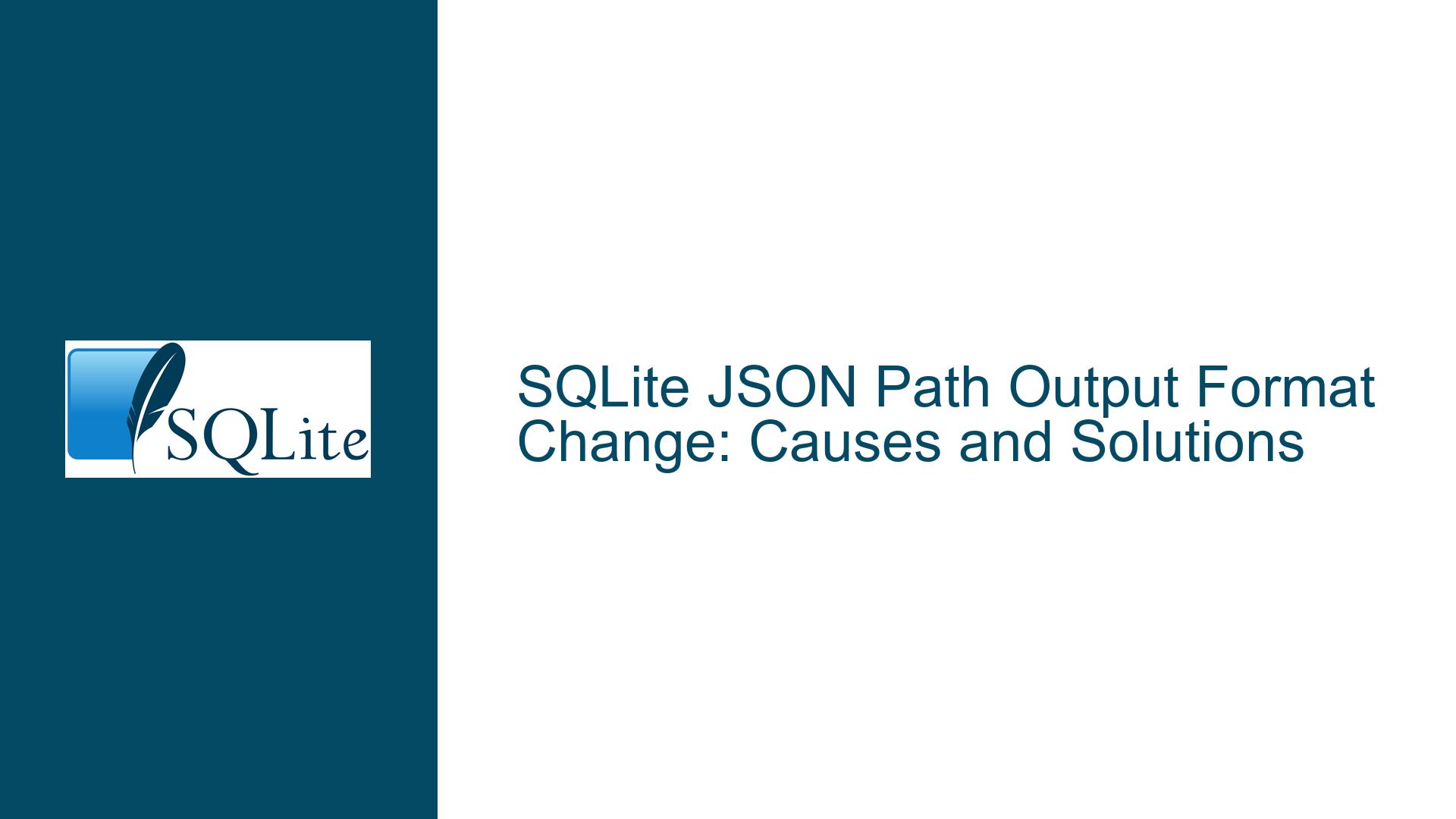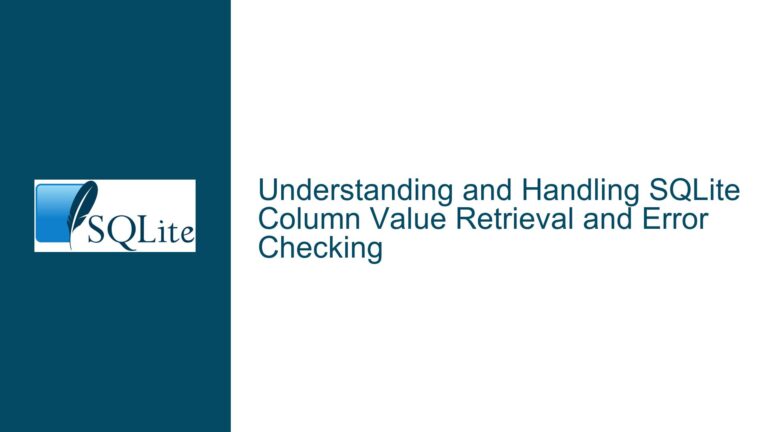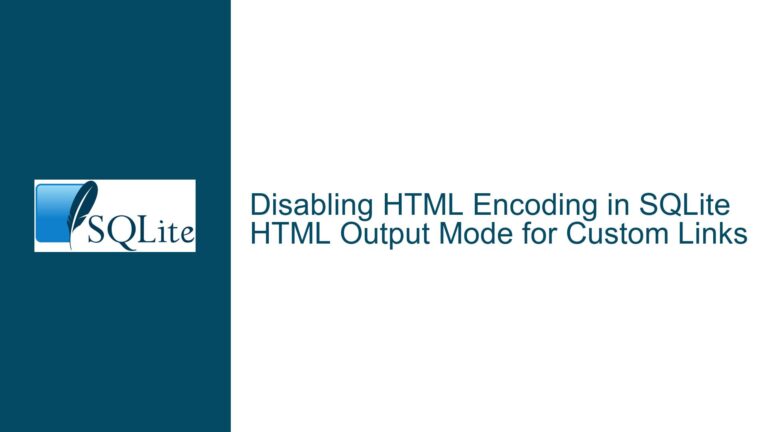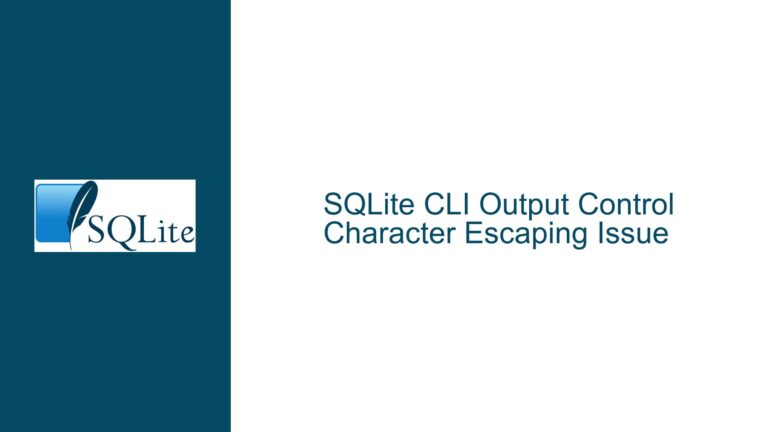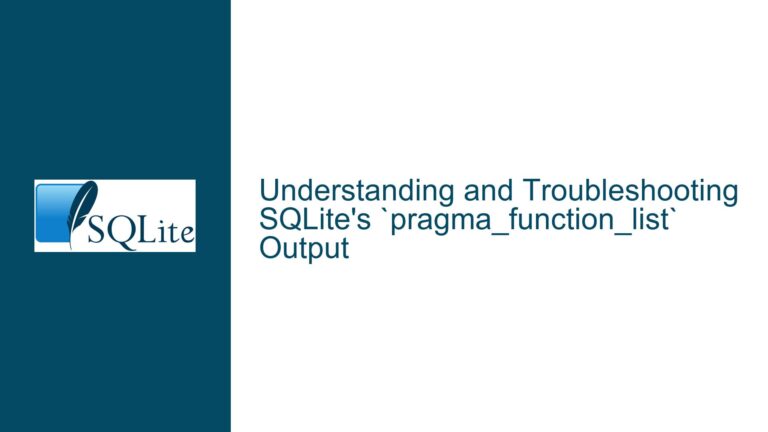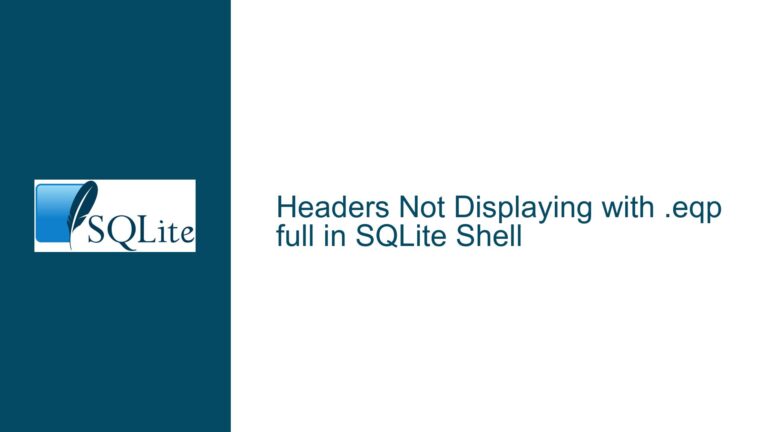SQLite JSON Path Output Format Change: Causes and Solutions
JSON Path Output Format Change in Recent SQLite Versions
The behavior of the json_tree() function in SQLite has undergone a subtle but significant change in recent versions, particularly affecting the format of the path column in its output. Specifically, the way object labels are quoted in the path output has been modified. For example, in SQLite version 3.37.2, a path might appear as $.2[0], whereas in version 3.45.2, the same path is rendered as $."2"[0]. This change has implications for applications or database schemas that rely on the specific format of the path output, particularly when performing string operations or defining views based on this output.
The change appears to be tied to the introduction of the -> and ->> operators in SQLite version 3.38.0, which enhanced JSON functionality. While this modification was intended as a bug fix to address syntactic ambiguity and improve consistency, it has inadvertently caused issues for legacy systems that depend on the previous format. Understanding the root cause of this change, its implications, and how to adapt to it is crucial for maintaining compatibility and ensuring robust database design.
Root Cause: Bug Fix and JSON Path Syntax Consistency
The change in the path output format is the result of a deliberate bug fix implemented in SQLite. The fix was introduced to address inconsistencies in how object labels were quoted in JSON paths. Prior to the fix, the quoting of object labels was inconsistent, leading to potential ambiguity in certain cases. The new algorithm ensures that object labels are quoted if they meet specific criteria, namely:
- The first character of the label is not an ASCII alphabetic character.
- Any character in the label is not an ASCII alphanumeric character.
In the example provided, the label "2" triggers the first condition because its first character is a digit, not an alphabetic character. As a result, the label is now quoted in the path output. This change aligns with the JSONPath specification, which allows for quoted labels in cases of ambiguity or special characters. While the previous behavior was technically correct in many cases, it was not consistently applied, leading to potential edge cases where unquoted labels could cause parsing issues.
The bug fix was implemented to ensure that all JSON paths generated by json_tree() are syntactically unambiguous and conform to a consistent standard. However, this change has exposed a vulnerability in applications or database schemas that rely on the exact format of the path output. Such reliance is inherently brittle, as it assumes a specific implementation detail that is subject to change.
Adapting to the Change: Migrating Views and Avoiding Brittle Code
The most immediate impact of this change is on database views that perform string operations on the path column of json_tree() output. For example, a view might extract specific components of the path or manipulate it to produce a desired output format. When the format of the path column changes, such views can break, leading to errors or incorrect results.
To address this issue, it is necessary to migrate affected views to a more robust implementation that does not depend on the specific format of the path output. One approach is to use SQLite’s JSON functions to directly extract the required information from the JSON data, rather than relying on string operations on the path column. For example, instead of parsing the path to extract keys and indices, you can use the json_extract() function to retrieve values directly from the JSON structure.
Consider the example provided, where the goal is to transform a JSON column into a table with columns for key, index, and value. The original implementation likely involved parsing the path column to extract the key and index, which is now problematic due to the change in path format. A more robust solution would involve using JSON functions to achieve the same result without relying on the path column. Here is an example of how this can be done:
WITH json_data AS (
SELECT '{"2":[{"_":1}],"4":[{"_":"foo"},{"_":"bar"}]}' AS json_column
),
flattened AS (
SELECT key, value
FROM json_data, json_each(json_data.json_column)
)
SELECT
key,
json_extract(value, '$[' || idx || ']._') AS value,
idx AS index
FROM flattened, json_each(flattened.value) AS arr WITH ORDINALITY
WHERE json_type(arr.value) = 'object';
In this example, the json_each() function is used to iterate over the top-level keys and values in the JSON column. The json_extract() function is then used to retrieve the values from the nested arrays, and the WITH ORDINALITY clause is used to preserve the array indices. This approach avoids any dependency on the format of the path column and is therefore immune to changes in its implementation.
Another strategy is to perform a one-time migration of affected views during application startup. This involves checking the SQLite version and updating view definitions to use the new, more robust implementation. While this approach requires additional upfront effort, it ensures long-term compatibility and reduces the risk of future breakage due to changes in SQLite’s behavior.
In conclusion, the change in the path output format of json_tree() is a result of a necessary bug fix to improve consistency and correctness in JSON path handling. While this change has caused issues for some applications, it also highlights the importance of avoiding brittle code that depends on implementation details. By migrating to a more robust implementation that leverages SQLite’s JSON functions, you can ensure that your database schema remains compatible with future versions of SQLite and is resilient to similar changes in the future.
